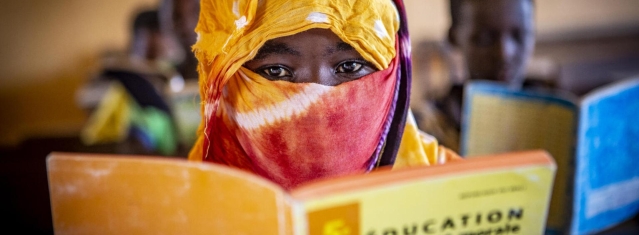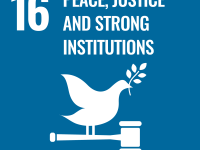News
Ten million children in the central Sahel need humanitarian assistance
Amid spiraling conflict

(Source: UNICEF/UN0538108/Keïta)
ARAC International Strategic Solutions -
The Sahel has long been one of the most vulnerable regions in Africa. But armed conflict and intensifying military clashes are putting lives and livelihoods at risk, disrupting access to services and leaving the futures of the central Sahel’s children in extreme jeopardy.
In brutal new lows, children are being directly targeted by non-state armed groups who operate across vast swathes of Mali and Burkina Faso, and increasingly in Niger. Hundreds of children have been abducted across the three countries, many of them girls.
In brutal new lows, children are being directly targeted by non-state armed groups who operate across vast swathes of Mali and Burkina Faso, and increasingly in Niger. Hundreds of children have been abducted across the three countries, many of them girls.
Since 2021, non-state armed groups have destroyed food reserves in a region that is among the hungriest and most malnourished on the planet. Some armed groups that oppose state-administered education burn and loot schools, and threaten, abduct or kill teachers. National security operations against armed groups, meanwhile, have resulted in multiple instances of children being killed, injured and arrested. Many schools and hospitals are being damaged or destroyed across the three countries.
The insecurity and displacement are spilling over central Sahel borders and unfolding in remote communities with scarce infrastructure and resources, where children already have very limited access to the services they depend on for survival and protection. All this is happening in one of the most climate-affected and water-scarce regions in the world.
The insecurity and displacement are spilling over central Sahel borders and unfolding in remote communities with scarce infrastructure and resources, where children already have very limited access to the services they depend on for survival and protection. All this is happening in one of the most climate-affected and water-scarce regions in the world.
This crisis urgently requires a stronger humanitarian response, but it also needs long-term, flexible investment for sustainable development that contributes to peacebuilding within these communities, especially for children. Tackling underlying causes, strengthening social services and anticipating crises can help countries build resilient societies with strong social cohesion that allow children to enjoy their rights and realize their potential.
What’s happening in the central Sahel?
Caught between armed groups, national security operations and intercommunal violence children are finding themselves directly targeted by non-state armed groups who operate across large areas of the region. 2022 was a particularly violent year for children in the central Sahel, almost certainly the deadliest since armed conflict broke out in northern Mali over a decade ago.In the early years of the crisis, the armed groups focused their attacks on security infrastructure and personnel and largely spared children and civilians; now their tactics suggest many are aiming to inflict maximum casualties and suffering on communities. Parties to the conflict exploit ethnic rivalries that turn communities against each other.
The pervasive insecurity has given rise to community self-defense groups, including some supported by governments, along with other militia that consider boys to be adults capable of bearing arms. The armed groups see these self-defense groups as supported by their communities, so they attack fighters and civilians, including children, without distinction.
Download the report:
https://reliefweb.int/attachments/6e5c41e3-51b4-4e5f-bd10-0f7f8584b69a/English.pdf
=====================================================
ARAC International, Strategic Communications & Analysis
Global Security Analyst | Human Rights Consultant
In partnership with the U.S. Agency for International Development (USAID)
U.S. Institute for Diplomacy and Human Rights Consultant
Institute for Economics and Peace Ambassador
Member of the International NGO Safety & Security Association (INSSA)
Member of UN OCHA Humanitarian Response
https:/iep.arac-international.org
ARAC International, Strategic Communications & Analysis
Global Security Analyst | Human Rights Consultant
In partnership with the U.S. Agency for International Development (USAID)
U.S. Institute for Diplomacy and Human Rights Consultant
Institute for Economics and Peace Ambassador
Member of the International NGO Safety & Security Association (INSSA)
Member of UN OCHA Humanitarian Response
https:/iep.arac-international.org
more information: https://www.arac-international.org/2023/03/reliefweb-ten-million-children-in.html
Liability for this article lies with the author, who also holds the copyright. Editorial content from USPA may be quoted on other websites as long as the quote comprises no more than 5% of the entire text, is marked as such and the source is named (via hyperlink).






